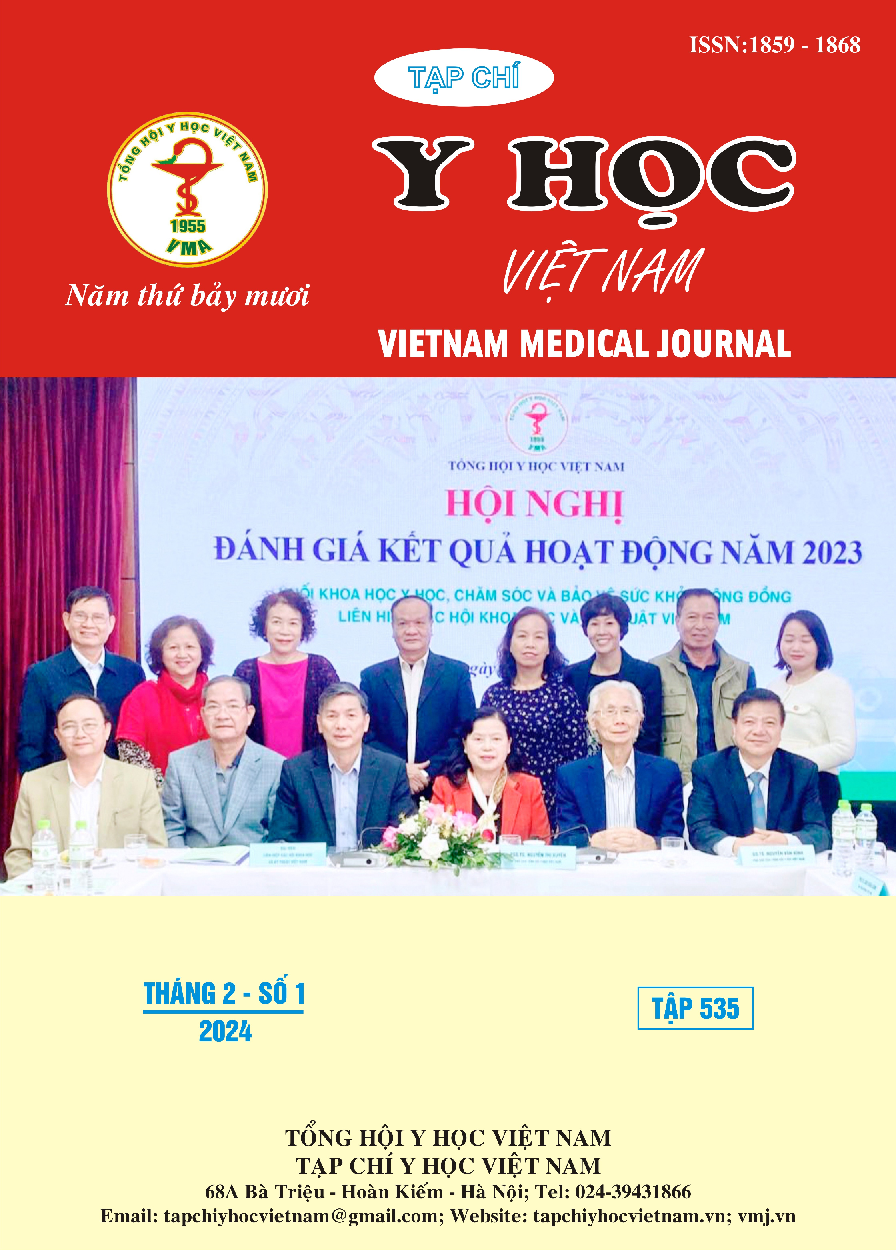SITUATION OF USING TRADITIONAL MEDICINE TREATMENT METHODS IN PRIMARY PERIPHERAL FACIAL PARALYSIS
Main Article Content
Abstract
Objectives: Survey on the situation of using traditional medicine methods to treat primary peripheral facial paralysis according to each traditional medicine clinical patterns. Subjects and Methods: A retrospective cross-sectional observational study was conducted on the medical records of 114 patients diagnosed with primary peripheral facial paralysis according to ICD-10, code G51.0 (Bell's Palsy) from January 2019 to December 2020 at the inpatient departments of Ho Chi Minh City’s Traditional Medicine Hospital. The study analyzed the utilization rates of traditional medicine methods based on clinical patterns. Results: in the wind-cold syndrome, combined finished pharmaceuticals with non-medication method (95.71%) is the most common method, in the wind-heat and blood stasis syndrome: mainly combined traditional medicine with finished pharmaceuticals and non-medication method (80.39% and 75%, respectively). Most patients were treated with a combination of symptoms-analysed-based prescription and finished pharmaceuticals. The warm-acupuncture and acupuncture-point injection method (18.18%) were used mostly in the wind-cold syndrome, while warm-acupuncture and massage-acupressure method (60%) in the wind-heat syndrome; the acupuncture and acupuncture-point injection and massage-acupressure (58.33%) in blood stasis syndrome, the combination of non-medication methods had a statistically significant difference between clinical diseases (p=0,024). Conclusion: The most common method used by primary peripheral facial paralysis patients at Ho Chi Minh City’s Traditional Medicine Hospital was finished pharmaceuticals combined with non-medication methods. For medication use, almost patients use symptoms-analysed-based prescription. Among the treatment methods, there are statistically a significant difference between clinical types.
Article Details
References
2. Trịnh Minh Ngọc, Đoàn Quang Huy. Đánh giá tác dụng điều trị liệt VII ngoại biên bằng phương pháp điện châm kết hợp bài thuốc “TK7 HV”. Tạp chí y dược cổ truyền Việt Nam. 2021;4(371):37-41.
3. Lê Hữu Thuyên. Đánh giá kết quả điều trị liệt dây thần kinh số VII ngoại vi do lạnh bằng điện châm kết hợp với siêu âm. Tạp chí Y học quân sự. 2022; 359:85-88.
4. Lê Văn Tuấn. Giáo trình thần kinh học. Nhà xuất bản Đại học quốc gia thành phố Hồ Chí Minh; 2020:300.
5. Võ Thị Xuân Uyên, Phan Quan Chí Hiếu. Xác định vị trí tổn thương của chứng khẩu nhãn oa tà. Tạp chí Y học thành phố Hồ Chí Minh. 2014;18(1):30-37.
6. Alanazi F, Kashoo FZ, Alduhishy A, Aldaihan M, Ahmad F, Alanazi A. Incidence rate, risk factors, and management of Bell's palsy in the Qurayyat region of Saudi Arabia. PeerJ. 2022;10:e14076.
7. Linder TE, Abdelkafy W, Cavero-Vanek S. The management of peripheral facial nerve palsy: “paresis” versus “paralysis” and sources of ambiguity in study designs. Otol Neurotol. 2010;31(2):319-327.
8. Yang LS, Zhou DF, Zheng SZ, et al. Early intervention with acupuncture improves the outcome of patients with Bell's palsy: A propensity score-matching analysis. Front Neurol. 2022;13:943453.


